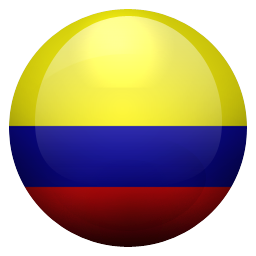Abstract
The work highlights the role of the technical evolution of coffee growing and transport in the construction of the Colombian Coffee Cultural Landscape (CCL). Despite the fact that its UNESCO declaration (2011) has a group of attributes related to technical modernization, it ignores the territorial and patrimonial structuring value of road and technical networks, like the railway networks, that since the 19th century have sustained and modernized the coffee production structure. With the objective of putting the use/disuse of the railway in a historical context and evaluating in an interscalar way the ruptures and continuities that it generated in the territory, we propose four technical periods that range from the antioqueño colonization to the present (1870-2020). We analyze them diachronically based on the consultation of historical archives, interviews with local actors and urban surveys, evaluating the background and impacts of the railways at the regional (CCL), metropolitan (West Central Metropolitan Area -AMCO) and local scale. As a result, it is argued that the technique is a narrative element that allows identifying elements that shape a coffee industrial heritage, hitherto unknown in the CCL. This heritage has great potential to boost or hinder urbanization processes, conformation of peri-urban spaces and metropolitan and regional fabrics.
References
Archivo General de la Nación (1917-80). Fondo Ferrocarriles Nacionales-Empresa Caldas, Tomo 323, Folio 156-240.
Aprile, J. (1992). La Ciudad Colombiana: siglo XIX y siglo XX. Bogotá: Talleres Gráficos Banco Popular.
Argollo Ferrão, A. M. de (2004). Arquitetura do café. Campinas: Unicamp.
Capel, H. (2011). Redes técnicas y ferro-carriles en la ciudad. Barcelona: Fundación de los Ferrocarriles españoles.
Dupuy, G. (1998). El urbanismo de redes: teorias y métodos. Barcelona: Oikos-Tau.
Galindo, J., Florez, G., & Henao, L. M. (2013). Puentes de trapecio en la región del Viejo Caldas (Colombia). DeArq (Bogotá), 12(1), 106-117.
Giraldo, L. F. (2001). Modernización e industrialización en el Antiguo Caldas 1900-1970. Manizales: Universidad de Caldas.
Guhl, A. (2008). Café y cambio de paisaje en Colombia 1970-2005. Medellin: Fondo Editorial Universidad EaSt, Banco de la República.
Humboldt, A. (1982). Extractos de sus diarios. Bogotá: Publicismo y Ediciones.
Londoño, C. A. (2013). Redes, ritmos y mosaicos rurales: modelo interpretativo del territorio rural cafetero de los municipios del Área Metropolitana Centro Occidente – AMCO, Colombia. Tesis de Doctorado en Urbanismo. Universidad Politécnica de Cataluña. Barcelona, España.
Ocampo, V. (2021). Arquitectura y diseño agroindustrial vernáculo rural del Eje Cafetero Colombiano. Butlletí d’Arqueologia Industrial i de Museus de Ciència i Tècnica (Cataluña), 84, 34-38.
Posada Callejas, J. (1918). Libro Azul de Colombia. New York : The J. J. Little & Ives Comp.
Ramirez, A.( 2016). El Ferrocarril de Caldas. Pereira: Hoyos Editores.
RAP (2018). Región Administrativa de PlaniScaciBn Eje Cafetero - Documento técnico de soporte. Pereira: RAP.
Rivera, J. A. (2013). Proceso de urbanización y agentes urbanos en Pereira, Colombia: Desigualdad social, fragmentación espacial y conflicto ambiental 1990-2012. Tesis de Doctorado en Geografía, planificación territorial y gestión ambiental. Universidad de Barcelona. Barcelona, España.
Santos, M. (1996). A natureza do espaço. São Paulo: Hicitec.
Unesco (2011). Nominations of properties to the World Heritage List. World Heritage Comittee Thirty-fifth session, Paris. https://whc.unesco.org/en/decisions/4314/ .

This work is licensed under a Creative Commons Attribution 4.0 International License.
Copyright (c) 2023 Tatiana Rivera Pabón, Vera Regina Tângari


